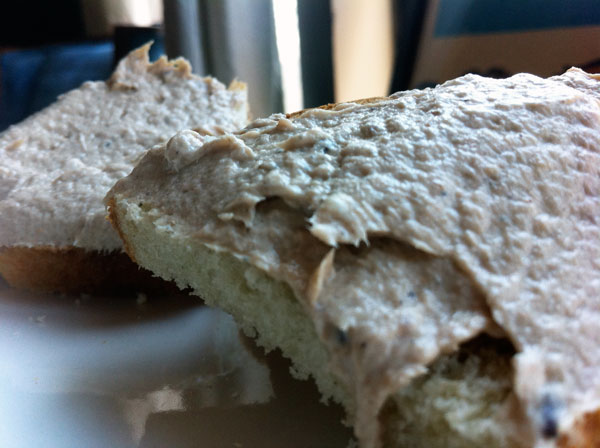As I’ve gotten more and more into food, I’ve become a bigger and bigger fan of dishes a lot of people hate. Stinky cheeses, chicken livers, sweetbreads, funky Belgian beers, peaty Islay Scotches—all are “acquired tastes,” and all are things I love.
My most recently acquired “acquired taste” is for oily, bony, “fishy” fish. Anchovies, sardines, mackerel, and the like are pretty much universally reviled in this country, but they shouldn’t be. Their intense flavor takes some getting used to, but once you do, it’s the ultimate source of umami. Try a real Caesar salad with anchovy-and-raw-egg-based dressing and you’ll understand the usefulness of these little fish.
But the reason I’m lumping all these foods together is that eating them, for the most part, is good for the world. On the Monterey Bay Aquarium Seafood Watch list, sardines and mackerel are listed as “Best Choices” without qualification—no matter where they’re caught or how, these fish can be safely considered sustainable. (The Monterey Bay list doesn’t include anchovies, and I’ve found some mixed information on them—anybody know if it’s eco-friendly?) On the other hand, mild favorites salmon (when farmed outside the US, as most is), red snapper, tilapia (when farmed in Asia, as most is), and tuna (most varieties used for sushi or canning) are all listed as “Avoid.”
Those weird organ meats are eco-friendly as well. For every chicken that ends up as boneless skinless breasts, pig that turns into pork tenderloin, and cow that becomes filet mignon, there are lots of these “undesirable” parts left over that we need to stop wasting if we hope to eat meat without ruining the environment. And if they’re cooked right, all of these can be very tasty—food cultures around the world have been developing recipes to use them for hundreds of years.
Funky beer, cheese, and whisky aren’t necessarily more eco-friendly than their mainstream cousins, but what they (and all the above) do is ward off the homogenization of food. Learning to appreciate these things keeps obscure traditions, techniques, and skills alive, keeping the food world more interesting.
All of which is a long way of saying that if you’re reading this, you should try something different, something you consider gross, as much as you can. If you don’t, there might not be anything anybody considers gross left.
And that brings me to the photo above. I’ve had a can of fancy Portuguese sardines sitting in my pantry for about two years, ever since I grabbed them off the free sample table way back when I worked at Cooking Light (we got lots of free samples). A CHOW story about seven ways to use them caught my eye. It turns out that the last US sardine cannery shut down last spring. I know, my sardines weren’t American anyway, but it struck a nerve. Needing something for lunch, I decided to finally use that tin of gross fish.
I made CHOW’s Sardine Pâté, but since I didn’t have any cottage cheese, I used goat cheese instead. The cheese is pretty tangy on its own, so I left out the lemon juice as well. The result is a creamy spread, like a much richer tuna salad, with a faint fishy note. The idea of cooking with sardines isn’t to mask that flavor; you have to appreciate it for itself.
So try this recipe, or another one for a food you wouldn’t ever think you’d eat. You’re helping keep cuisine diversity alive, and making life on Earth that much more interesting
Sardine Pâté
Adapted from CHOW
1 can sardines, with oil
3 oz. Greek yogurt
3 oz. goat cheese, such as Belle Chevre
Process all ingredients in a food processor until smooth. Serve on crackers or lightly toasted bread.

How about some links to other recipes that use sustainable parts and animals?
I love sardines and herrings. I just tried some anchovies, and it was one of the most disgusting things I have ever tried to eat. I’ll stick with my beloved sardines! (But hey, to each their own.)